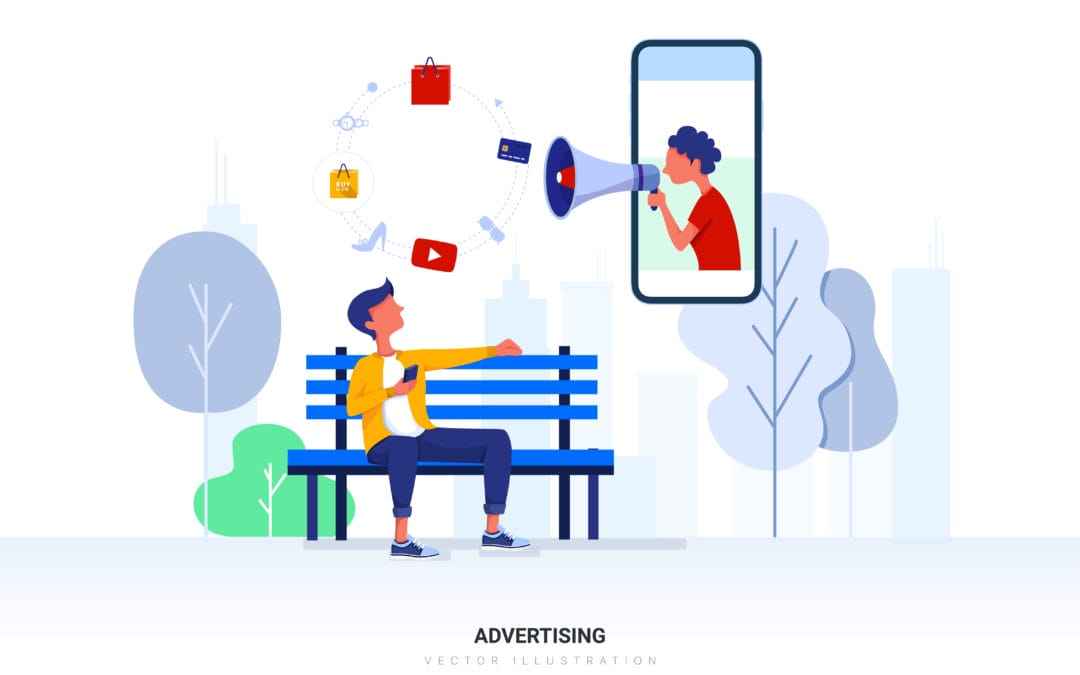Display ads, also commonly known as banner ads, have been around since the mid-1990s and have proliferated virtually every site on the Internet, and more recently, they now appear on many mobile apps. There are numerous advertising networks and other conglomerates that inventory and manage the various functions related to display advertising. Google is one of the largest players in that arena and its Google Display Network is a “group of more than 2 million websites, videos, and apps where your ads can appear. Display Network sites reach over 90% of Internet users worldwide.”
Website owners can choose to sign up with GDN via the Google AdSense program and install a snippet of code on their website which allows the ads to be displayed. The publisher (website owner) receives a portion of the ad revenues that are generated to help them monetize their site.
Advertisers utilizing the Display Network have the option to bid on a cost per click (CPC) basis OR a cost per thousand impressions (CPM) basis, which is more popular. In case you are curious, the “M” in CPM stands for mille which is the Latin word for 1000. You submit the maximum bid price that you’re willing to pay for 1000 impressions, meaning the number of times your advertisement is shown.
This differs from the Google search network which is exclusively CPC. There are advantages and disadvantages of each strategy depending on your goals. Therefore, it is recommended that you speak with an advertising or marketing professional to determine the best options for your situation.
Aside from the partner websites within the Google Display Network, there are many other properties and apps available which allow for display or video advertising. This is normally facilitated by Real-Time Bidding (RTB) which is an auction environment whereby the inventory of ads is bought and sold on a per-impression basis. On the backend, the entire process is quite complex because it involves numerous variables that are being analyzed on a real-time basis. Fortunately for the advertiser, the process is more straightforward.
How Do Display Ads Differ from Search Ads?
Search ads are best when you want to capture the intent of the prospect. In other words, someone often has an immediate need for a particular product or service. Maybe it’s a clogged toilet, broken tooth, or a disabled car that needs towing. The potential customer goes to Google and searches for “plumber near me” or “towing company Boston” for example. The search network is by far the best option if you are looking for immediate solutions.
Display ads are best for building brand awareness. In other words, display advertising help to cultivate and nurture the feelings of desire and want rather than instantly providing a solution for a need they already have. It also helps to build trust and authority for your brand because people are seeing your ads on many of the websites they visit. If they are already considering the purchase of a product or service you offer, and see your company as a likely supplier, many people will often think of you first when it is purchase time. This is called TOPA (top of mind awareness).
Which Is Better for Me, Display Ads or Search Network?
This is a question that is best answered by a marketing professional who is familiar with all the pros and cons of both platforms. There are many considerations regarding the type of product or service you are promoting and your desired goals, which influence which platform may be best. The conversion rate for search is about 3 to 4 times better in general, but so is the price. There are many other factors to consider, but both platforms can be highly successful and produce very good ROI if structured and managed properly.
If you would like to discuss your company’s goals, and how these marketing techniques can help you reach your desired outcomes, please give us a call today. We would love to can learn more about your business and what you would like to achieve so we can make the best recommendations.


Recent Comments